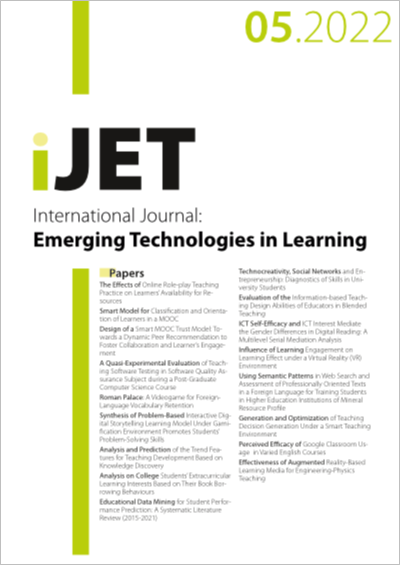Smart Model for Classification and Orientation of Learners in a MOOC
DOI:
https://doi.org/10.3991/ijet.v17i05.28153Keywords:
MOOC, profile, traceability, content, teacher, learner, learning objectives, classification, neural networks, self-organizing map.Abstract
Distance education (E-Learning) is experiencing significant, rapid and con-tinuous evolution all over the world, especially with the arrival of the covid-19 pandemic. MOOCs are considered as a personal learning process, which are addressed to a massive and varied number of learners. The problem of the free opening MOOCs puts us in front of a massive number of registrants, which means a large number of heterogeneous profiles, which makes the teacher's task more complicated, either in terms of follow-up or framing. As a solution to this problem, in this present work, we propose an approach that allows the classification and categorization of learner profiles via an intelli-gent and autonomous system developed on the basis of neural networks and in particular the self-organizing map (SOM). This approach which is based on the traceability of learners, allowed us to get homogenous groups in order to direct them towards MOOCs that meet their characteristics and needs. The tests carried out have shown that our approach is efficient in terms of classification and grouping of profiles, which allows us to manage a large number of learners either at the level of the choice of relevant contents or during the evaluation process.
Downloads
Published
2022-03-14
How to Cite
Dhaiouir, I., Ezziyyani, M., & Khaldi, M. (2022). Smart Model for Classification and Orientation of Learners in a MOOC. International Journal of Emerging Technologies in Learning (iJET), 17(05), pp. 19–35. https://doi.org/10.3991/ijet.v17i05.28153
Issue
Section
Papers
License
Copyright (c) 2022 Dhaiouir Ilham, Ezziyyani Mostafa, Khaldi Mohamed

This work is licensed under a Creative Commons Attribution 4.0 International License.



